dataset
Type of resources
Topics
INSPIRE themes
Provided by
Years
Formats
Representation types
Update frequencies
status
-
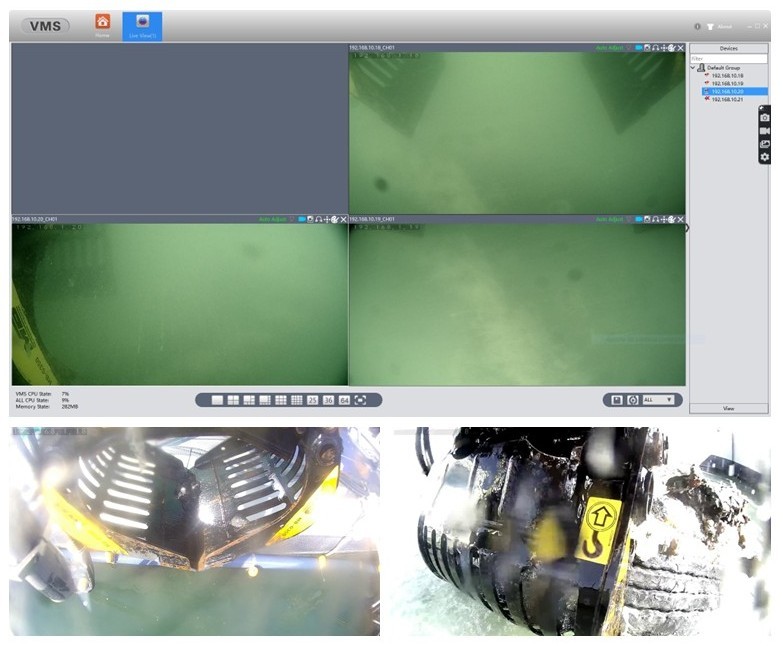
The robotic seabed cleaning platform developed by TECNALIA, CNRS- LIRMM and “Servizi Tecnici”, consists in a floating platform which, through cables and winches, the seabed cleaning robot is attached. The structure is equipped with a set of sensors for underwater perception to control the robot and detect & identify the marine litter to be removed. Moreover, the robotic platform is characterized by two different tools that allow to collect the ML on the seabed: a drudge to suck up smaller litter and a gripper to grasps larger items like tires, parts of boats, fishing nets etc.
-
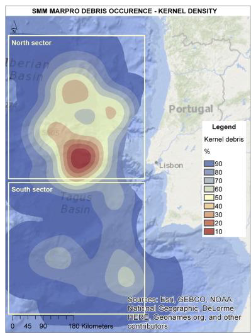
The MAELSTROM Project performed a literature survey includes existing databases on marine litter data on the water column, sea floor, estuaries, rivers and beaches. Specifically, the European/Regional Seas review is based on existing publications while the study areas review is based on existing publications and raw data, when available. The review intends to provide the knowledge-base on the characteristics, sources and pathways of marine litter in the two demo sites of the lagoon of Venice (Italy) and the Ave River estuary (Portugal). Specifically, the review aims at: ● improving the understanding of the amounts and types of marine litter occurring in Europe and in particular in the study areas; ● improving the understanding of the main sources and pathways of marine litter in Europe and in particular in the study areas; ● supporting the definition of the input data and assumptions related to marine litter to be used in numerical models of marine litter spatial distribution. To achieve this objective, we assume the following constraints: ● the main focus is on macro-litter; ● the review has a geographic scope focused on the study sites; ● marine litter literature has been analysed to indicate the most probable sources and amount. Here the results related to the NW Portuguese coastal area. For more details, see the project deliverable: Ghezzo, M., MOSCHINO, V., Galvez, D., Mira Veiga, J., Bocci, M., Iglesias, I., Vieira, L., Sousa Pinto, I., Antunes, S. C., & Correia, A. M. (2021). D2.1 Report on the characterization of major sources of marine litter and macro-plastic in the demo sites. MAELSTROM Project. https://doi.org/10.5281/zenodo.14920205
-
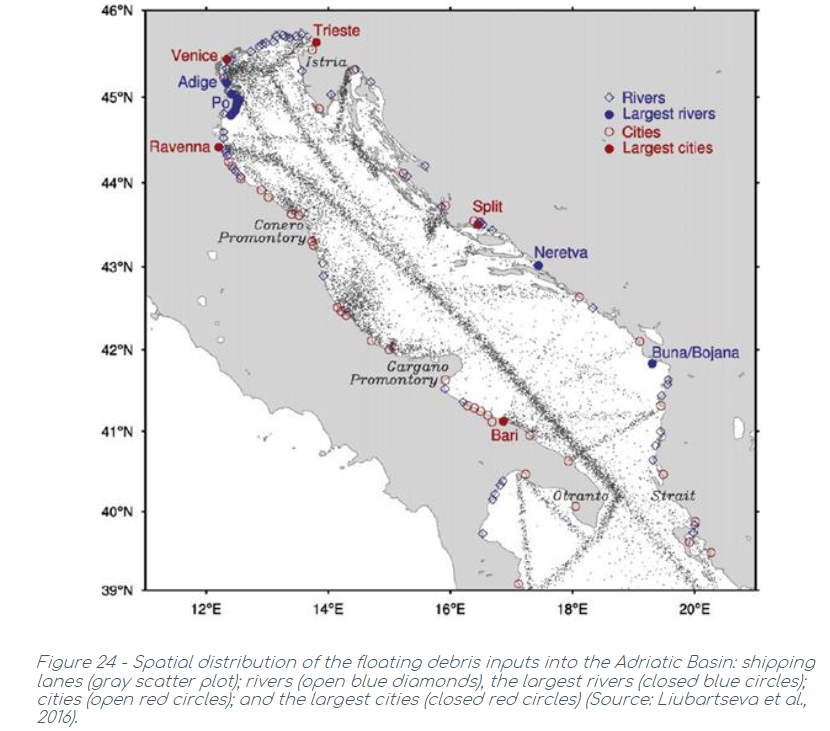
The MAELSTROM Project performed a literature survey includes existing databases on marine litter data on the water column, sea floor, estuaries, rivers and beaches. Specifically, the European/Regional Seas review is based on existing publications while the study areas review is based on existing publications and raw data, when available. The review intends to provide the knowledge-base on the characteristics, sources and pathways of marine litter in the two demo sites of the lagoon of Venice (Italy) and the Ave River estuary (Portugal). Specifically, the review aims at: ● improving the understanding of the amounts and types of marine litter occurring in Europe and in particular in the study areas; ● improving the understanding of the main sources and pathways of marine litter in Europe and in particular in the study areas; ● supporting the definition of the input data and assumptions related to marine litter to be used in numerical models of marine litter spatial distribution. To achieve this objective, we assume the following constraints: ● the main focus is on macro-litter; ● the review has a geographic scope focused on the study sites; ● marine litter literature has been analysed to indicate the most probable sources and amount. Here the results related to the Adriatic Sea subregion that is characterised by the presence of many sources of marine litter, including large rivers, big coastal cities, touristic facilities, heavy shipping traffic, intense commercial fisheries and mussel farming. For more details, see the project deliverable: Ghezzo, M., MOSCHINO, V., Galvez, D., Mira Veiga, J., Bocci, M., Iglesias, I., Vieira, L., Sousa Pinto, I., Antunes, S. C., & Correia, A. M. (2021). D2.1 Report on the characterization of major sources of marine litter and macro-plastic in the demo sites. MAELSTROM Project. https://doi.org/10.5281/zenodo.14920205
-

As part of the European MAELSTROM project, passive acoustic monitoring (PAM) was conducted using a hydrophone deployed before and after the cleaning campaign carried out with a robotic platform at the Mussel Farm site. The primary aim of this acoustic monitoring was to analyze underwater soundscapes to detect the presence of soniferous organisms, with particular attention to fish and potentially invertebrate components.
-
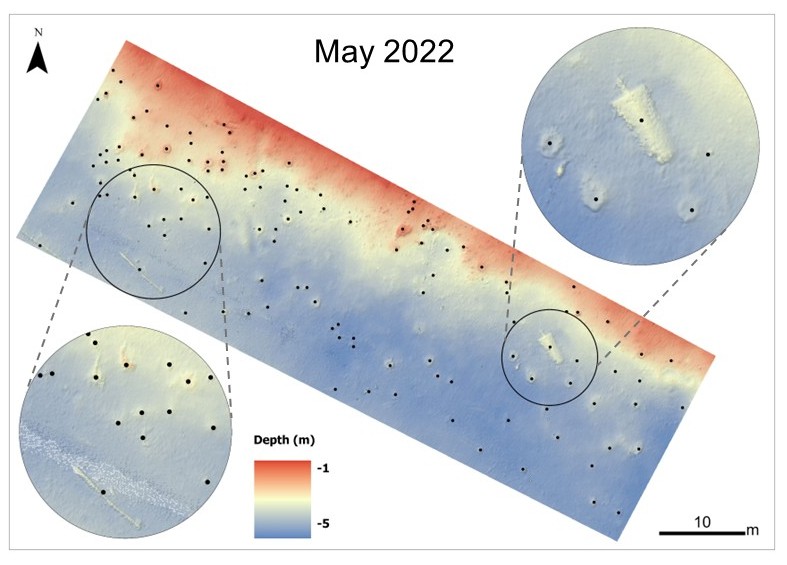
For this project, two study areas were selected and both are characterized by the presence of marine litter that has accumulated over time: a lagoon area (Sacca Fisola) and a coastal area, the latter located on an abandoned mussel farm.The lagoon site of Sacca Fisola is situated in an area where waste accumulates in substantial quantities. Consequently, the channel's seabed is marked by a significant presence of waste. Some of these waste items are buried beneath layers of sediment, while many others remain visible on the surface and can be identified using the bathymetric map generated from MultiBeam EchoSounder (MBES) data.
-
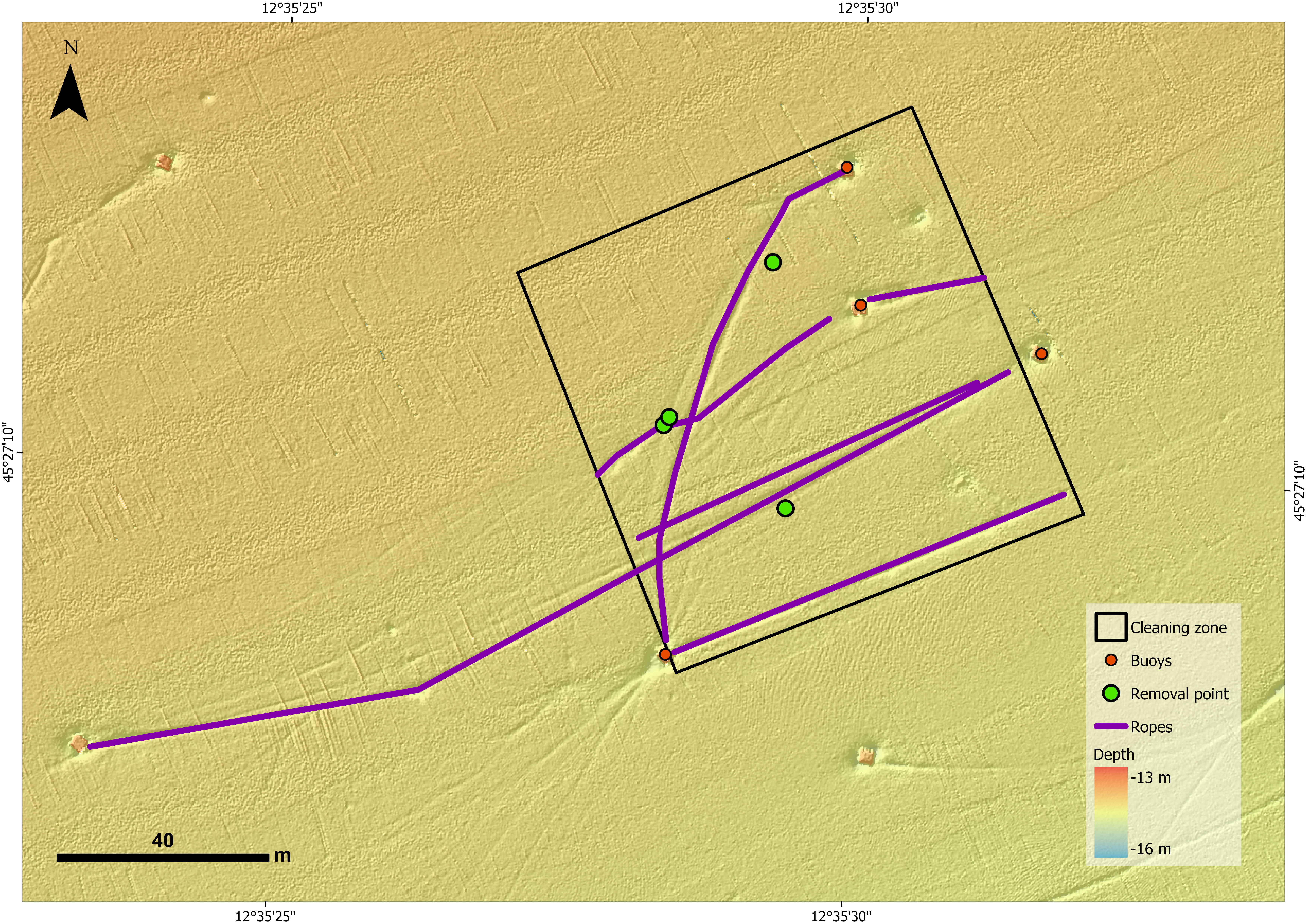
For this project, two study areas were selected and both are characterized by the presence of marine litter that has accumulated over time: a lagoon area (Sacca Fisola) and a coastal area, the latter located on an abandoned mussel farm. The abandoned mussel farm is situated across of the mouth of the river Sile, about 1.7 nautical miles from the coast. It covers a total area of 1960000 sqm with an average depth of 14 m. Mussel farm encloses a sub area called Experimental Field, used in the past for research activities. The examination of bathymetric data facilitated the acquisition of a precise estimation regarding the presence of objects suspended within the water column and resting on the seabed. This evaluation uncovered valuable insights into the underwater conditions and object types, thus enhancing our comprehension of the marine environment in the regions examined.
-
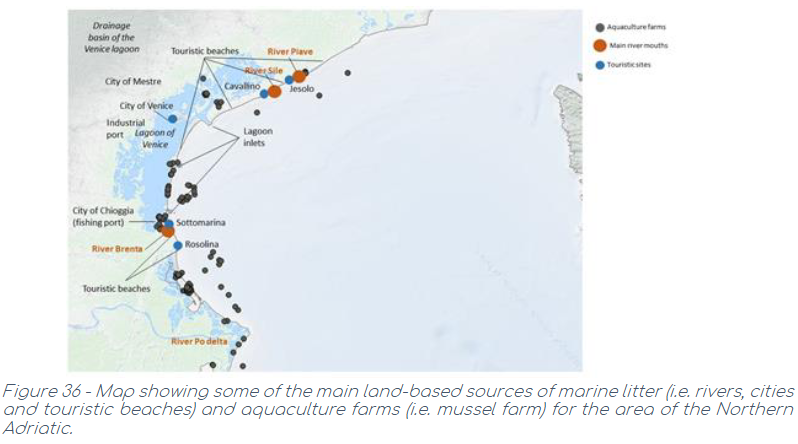
The MAELSTROM Project performed a literature survey includes existing databases on marine litter data on the water column, sea floor, estuaries, rivers and beaches. Specifically, the European/Regional Seas review is based on existing publications while the study areas review is based on existing publications and raw data, when available. The review intends to provide the knowledge-base on the characteristics, sources and pathways of marine litter in the two demo sites of the lagoon of Venice (Italy) and the Ave River estuary (Portugal). Specifically, the review aims at: ● improving the understanding of the amounts and types of marine litter occurring in Europe and in particular in the study areas; ● improving the understanding of the main sources and pathways of marine litter in Europe and in particular in the study areas; ● supporting the definition of the input data and assumptions related to marine litter to be used in numerical models of marine litter spatial distribution. To achieve this objective, we assume the following constraints: ● the main focus is on macro-litter; ● the review has a geographic scope focused on the study sites; ● marine litter literature has been analysed to indicate the most probable sources and amount. Here the results related to the Venice lagoon and Venetian coastal area (demonstration site). For more details, see the project deliverable: Ghezzo, M., MOSCHINO, V., Galvez, D., Mira Veiga, J., Bocci, M., Iglesias, I., Vieira, L., Sousa Pinto, I., Antunes, S. C., & Correia, A. M. (2021). D2.1 Report on the characterization of major sources of marine litter and macro-plastic in the demo sites. MAELSTROM Project. https://doi.org/10.5281/zenodo.14920205
-
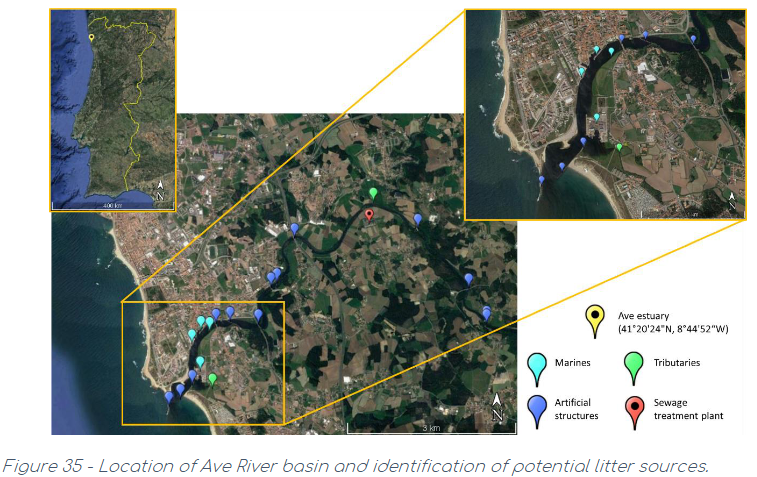
The MAELSTROM Project performed a literature survey includes existing databases on marine litter data on the water column, sea floor, estuaries, rivers and beaches. Specifically, the European/Regional Seas review is based on existing publications while the study areas review is based on existing publications and raw data, when available. The review intends to provide the knowledge-base on the characteristics, sources and pathways of marine litter in the two demo sites of the lagoon of Venice (Italy) and the Ave River estuary (Portugal). Specifically, the review aims at: ● improving the understanding of the amounts and types of marine litter occurring in Europe and in particular in the study areas; ● improving the understanding of the main sources and pathways of marine litter in Europe and in particular in the study areas; ● supporting the definition of the input data and assumptions related to marine litter to be used in numerical models of marine litter spatial distribution. To achieve this objective, we assume the following constraints: ● the main focus is on macro-litter; ● the review has a geographic scope focused on the study sites; ● marine litter literature has been analysed to indicate the most probable sources and amount. Here the results related to the Ave estuary Portuguese demonstration site. For more details, see the project deliverable: Ghezzo, M., MOSCHINO, V., Galvez, D., Mira Veiga, J., Bocci, M., Iglesias, I., Vieira, L., Sousa Pinto, I., Antunes, S. C., & Correia, A. M. (2021). D2.1 Report on the characterization of major sources of marine litter and macro-plastic in the demo sites. MAELSTROM Project. https://doi.org/10.5281/zenodo.14920205
-
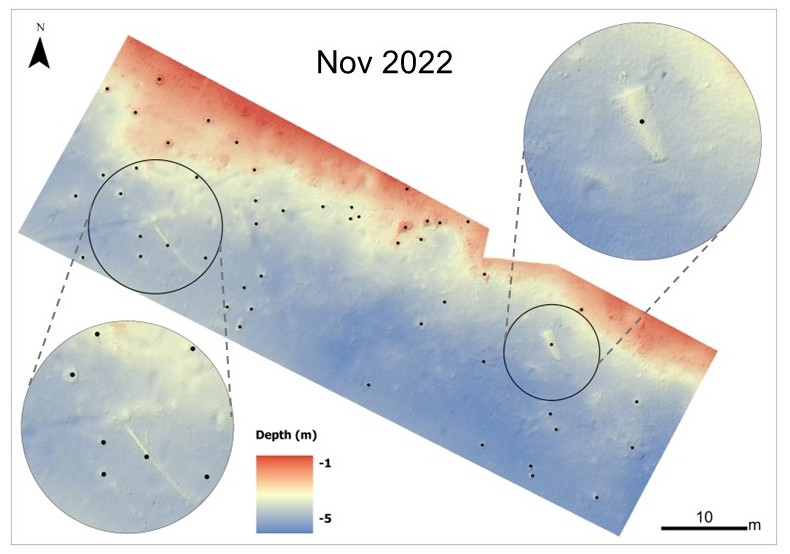
For this project, two study areas were selected and both are characterized by the presence of marine litter that has accumulated over time: a lagoon area (Sacca Fisola) and a coastal area, the latter located on an abandoned mussel farm.The lagoon site of Sacca Fisola is situated in an area where waste accumulates in substantial quantities. Consequently, the channel's seabed is marked by a significant presence of waste. Some of these waste items are buried beneath layers of sediment, while many others remain visible on the surface and can be identified using the bathymetric map generated from MultiBeam EchoSounder (MBES) data.
-

MAELSTROM (Smart Technology for Marine Litter Sustainable Removal and Management) is a Horizon 2020 (H2020) project co-funded by the European Commission, bringing together 14 partners, including research centers, recycling companies, marine scientists, and robotics experts, from eight European countries. The project seeks to reduce the environmental impact of marine litter (ML) on coastal ecosystems by identifying accumulation hotspots, intercepting floating river waste, and removing plastic-based debris from the seabed to prevent its breakdown into microplastics (MPs). At the core of MAELSTROM’s innovative solution is an advanced robotic seabed cleaning platform, developed collaboratively by TECNALIA, CNRS-LIRMM, and "Servizi Tecnici." This floating structure serves as a base station for the cleaning robot, deploying it via cables and winches while integrating a sophisticated suite of underwater sensors to detect, identify, and manage marine litter. The platform supports two key tools: a dredge for collecting smaller debris and a gripper for retrieving larger items, such as tires, boat fragments, and fishing nets. Designed to function as an adaptable and sustainable system, this platform exemplifies cutting-edge technology for marine litter removal and management.
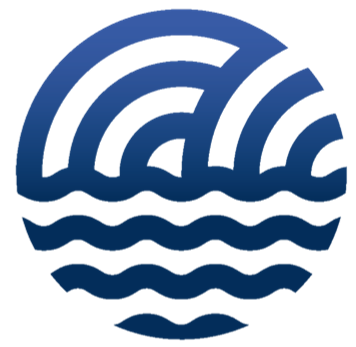 CNR-ISMAR
CNR-ISMAR